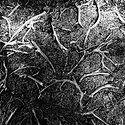It is possible to make a color enlarger using lasers. I think, in principle, that "should work".
Using 3 lasers:
The light before reaching the color negative should hit a diffuser for make the light even. Also, the lens of the laser should make a wider cone.
One problem that I found is the speckle. So, to avoid the granularity is using 3 o more lasers from every color to reduce that effect.
What do you think?
Using 3 lasers:
- Blue: ~450 nm
- Green: ~530 nm
- Red: ~640–660 nm
The light before reaching the color negative should hit a diffuser for make the light even. Also, the lens of the laser should make a wider cone.
One problem that I found is the speckle. So, to avoid the granularity is using 3 o more lasers from every color to reduce that effect.
What do you think?










